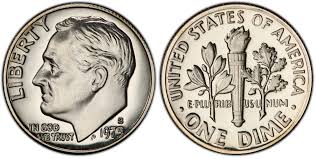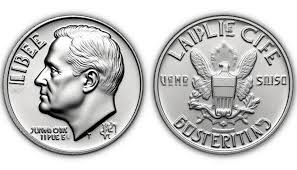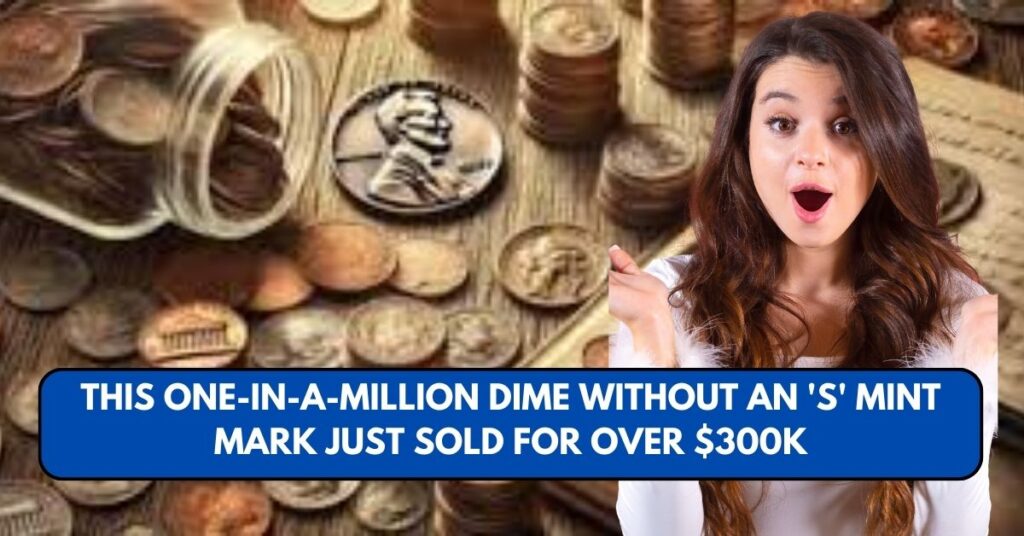When it comes to pocket change, most of us don’t think twice about dimes. But for coin collectors and numismatists, certain dimes can be worth a small fortune—sometimes more than gold itself. The reason?
Rare mint errors—unexpected mistakes that occur during the coin manufacturing process—have transformed ordinary coins into highly sought-after collectibles.
One such example is a seemingly ordinary Roosevelt dime that became the center of attention due to a simple but critical minting omission.
The Infamous 1975 Roosevelt Dime Without the “S”

In 1975, the U.S. Mint produced proof Roosevelt dimes at its San Francisco facility, where coins are usually marked with an “S” mint mark to denote their origin.
However, a few coins were released without the “S” mint mark—a result of a human error during the production process. This missing detail turned the coin into a rarity, with only two known examples existing today.
In 2011, one of these mint-error dimes fetched a staggering $349,600 at auction, and prices have continued to soar since then. According to AP News, this dime is considered one of the most valuable coins ever produced in modern U.S. history.
How Mint Errors Happen
The U.S. Mint uses specific dies to strike coins. Each die includes a mint mark—a letter that identifies where the coin was produced (e.g., “P” for Philadelphia, “D” for Denver, and “S” for San Francisco). In the case of the 1975 Roosevelt dime, a proof die lacking the “S” mint mark was accidentally used.
This kind of error is classified as a “missing mint mark” error, and it’s incredibly rare in proof coins, which are usually subject to stricter quality control.
While most mint errors result in minor value increases, errors like this—on a proof coin with very limited mintage—can increase a coin’s value by hundreds of thousands of dollars.
You can explore official guidelines and processes on U.S. coin production at the United States Mint.
Another Golden Example: The 1965 Silver Dime Error
Another valuable error occurred in 1965 when a few Roosevelt dimes were mistakenly struck on silver planchets, even though the U.S. had switched to a copper-nickel alloy for dimes that year. These 1965 silver dimes are visually similar to older coins but are rare due to the change in metal composition.
You can distinguish these rare dimes by their weight (2.5 grams for silver vs. 2.27 grams for clad dimes). Many of these silver error dimes have sold for $7,000 to over $10,000 at auctions and coin shows, depending on their condition.
Is Your Change Worth a Fortune?
The idea of finding a valuable dime in your spare change may sound like a dream, but it happens more often than you’d think. Coin collectors advise checking for the following:
- No mint mark where there should be one
- Off-center strikes or unusual shapes
- Double dies, where designs appear slightly duplicated
- Wrong planchet errors, such as a dime struck on a penny blank
To evaluate if a coin is valuable, you can consult with professionals through reputable organizations such as the Professional Coin Grading Service (PCGS) or the Numismatic Guaranty Company (NGC).

Should You Sell or Hold?
If you discover a rare mint error, you may be tempted to sell it quickly. However, like fine wine, some coins appreciate in value over time, especially as collectors and investors seek to complete sets. It’s always a good idea to get the coin professionally graded and appraised before making any decisions.
You can also report unusual coins or get them authenticated through services listed on the U.S. Mint Collector Resources.
Conclusion
What appears to be a simple manufacturing oversight can dramatically change the fate of a coin—and its owner. From missing mint marks to wrong metal strikes, these small errors have turned ordinary dimes into legendary finds.
Whether you’re a seasoned collector or someone with a curiosity for treasure hunting, it might be worth giving your pocket change a second look. After all, your next dime might just be worth more than its weight in gold.
This article has been carefully fact-checked by our editorial team to ensure accuracy and eliminate any misleading information. We are committed to maintaining the highest standards of integrity in our content.



